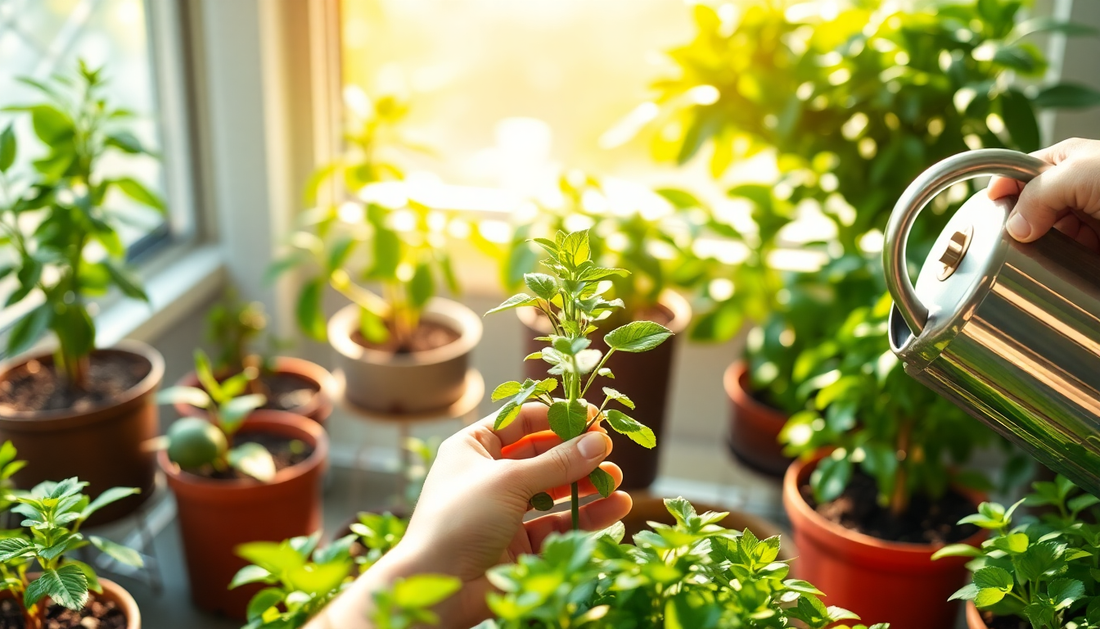
Revive Your Indoor Plants: Strategies to Fix Stunted Growth
As an avid indoor plant enthusiast, I've encountered my fair share of challenges when it comes to maintaining healthy, thriving greenery. One of the most common issues I've faced is stunted growth, where my beloved plants seem to stall in their development, leaving me frustrated and wondering what I'm doing wrong. If you've found yourself in a similar situation, fear not – I'm here to share my insights and strategies to help you revive your indoor plants and get them back on track to reaching their full potential.
Understanding the Causes of Stunted Growth
Before we dive into the solutions, it's important to understand the underlying reasons behind stunted growth in indoor plants. Several factors can contribute to this problem, and identifying the root cause is the first step in addressing it effectively.
Inadequate Light Exposure
One of the primary culprits behind stunted growth is insufficient light exposure. Indoor plants, just like their outdoor counterparts, require a certain amount of sunlight to thrive. If your plants are not receiving enough light, they may struggle to grow and develop properly.
Improper Watering Practices
Another common issue is improper watering habits. Overwatering or underwatering can both lead to stunted growth, as plants need a delicate balance of moisture to function optimally.
Nutrient Deficiencies
Nutrient deficiencies can also be a significant factor in stunted growth. Plants require a variety of essential nutrients, such as nitrogen, phosphorus, and potassium, to support their growth and development. If these nutrients are lacking in the soil, your plants may not be able to reach their full potential.
Pot Size and Root Constriction
The size of the pot your plant is growing in can also play a role in stunted growth. If the roots become constricted due to an overly small pot, the plant's ability to absorb water and nutrients may be impaired, leading to stunted development.
Pests and Diseases
Finally, the presence of pests or diseases can also contribute to stunted growth. Insects, fungi, or other pathogens can interfere with a plant's ability to thrive, causing it to stall in its development.
Strategies to Revive Stunted Indoor Plants
Now that we've identified the potential causes of stunted growth, let's explore the strategies you can implement to help your indoor plants regain their vigor and reach their full potential.
Optimize Light Exposure
Ensuring your plants receive the right amount of light is crucial. Assess the lighting conditions in your home and make adjustments as needed. Move your plants to a brighter location, or consider investing in supplemental lighting, such as grow lights, to provide the necessary illumination.
Establish Proper Watering Habits
Developing a consistent watering routine is essential. Familiarize yourself with the specific watering needs of your plant species and adjust your watering schedule accordingly. Avoid both overwatering and underwatering, as both can lead to stunted growth.
Provide Adequate Nutrients
Nourish your plants with the right balance of essential nutrients. Consider using a high-quality, well-balanced fertilizer, either in liquid or slow-release form, to ensure your plants are getting the nutrients they need. Pay attention to any signs of nutrient deficiencies, such as discolored leaves or stunted growth, and adjust your fertilization routine accordingly.
Repot and Improve Soil Conditions
If your plants are rootbound or the soil has become depleted of nutrients, it may be time to repot them. Choose a pot that is slightly larger than the current one, and use a high-quality, well-draining potting mix to provide your plants with the optimal growing medium.
Manage Pests and Diseases
Regularly inspect your plants for any signs of pests or diseases, and take immediate action to address any issues. Use organic or natural pest control methods, such as insecticidal soaps or neem oil, to eliminate any unwanted visitors. Promptly remove any affected plant parts to prevent the spread of diseases.
Provide Proper Care and Maintenance
In addition to the specific strategies mentioned above, it's important to maintain a consistent and attentive care routine for your indoor plants. This includes regular pruning, cleaning, and monitoring for any changes in their appearance or behavior.
By implementing these strategies, you'll be well on your way to reviving your stunted indoor plants and helping them reach their full potential. Remember, every plant is unique, so be patient and adaptable as you work to find the right balance of care for your greenery.
Conclusion
Overcoming stunted growth in indoor plants can be a rewarding challenge, but with the right knowledge and approach, you can help your plants thrive. By addressing the underlying causes, providing the necessary nutrients and care, and being attentive to your plants' needs, you can create a thriving indoor oasis that brings joy and beauty to your living space.
So, don't be discouraged by those stubborn, slow-growing plants. Embrace the journey of nurturing and reviving them, and enjoy the satisfaction of watching your indoor greenery flourish. Happy gardening!






No comments